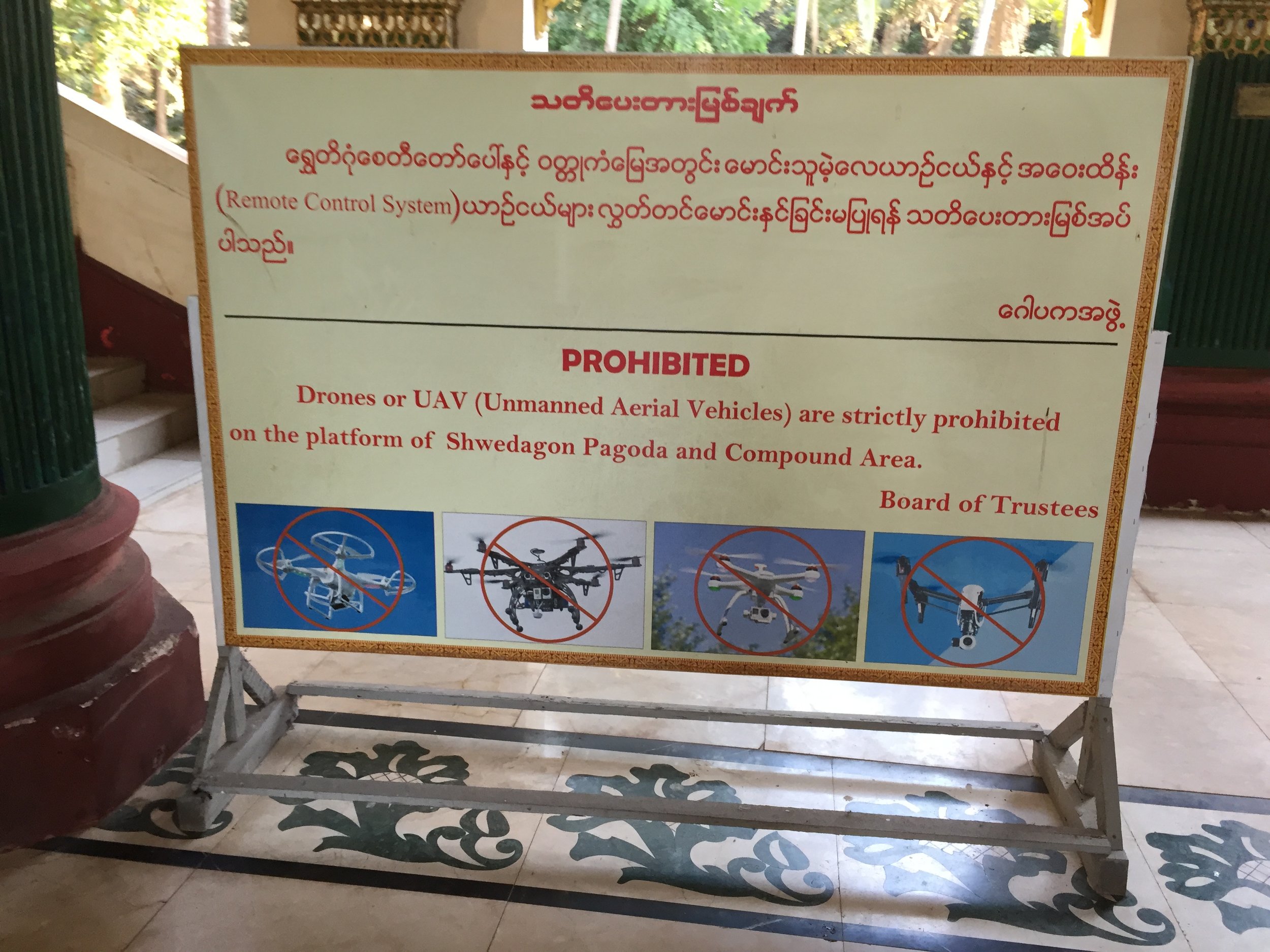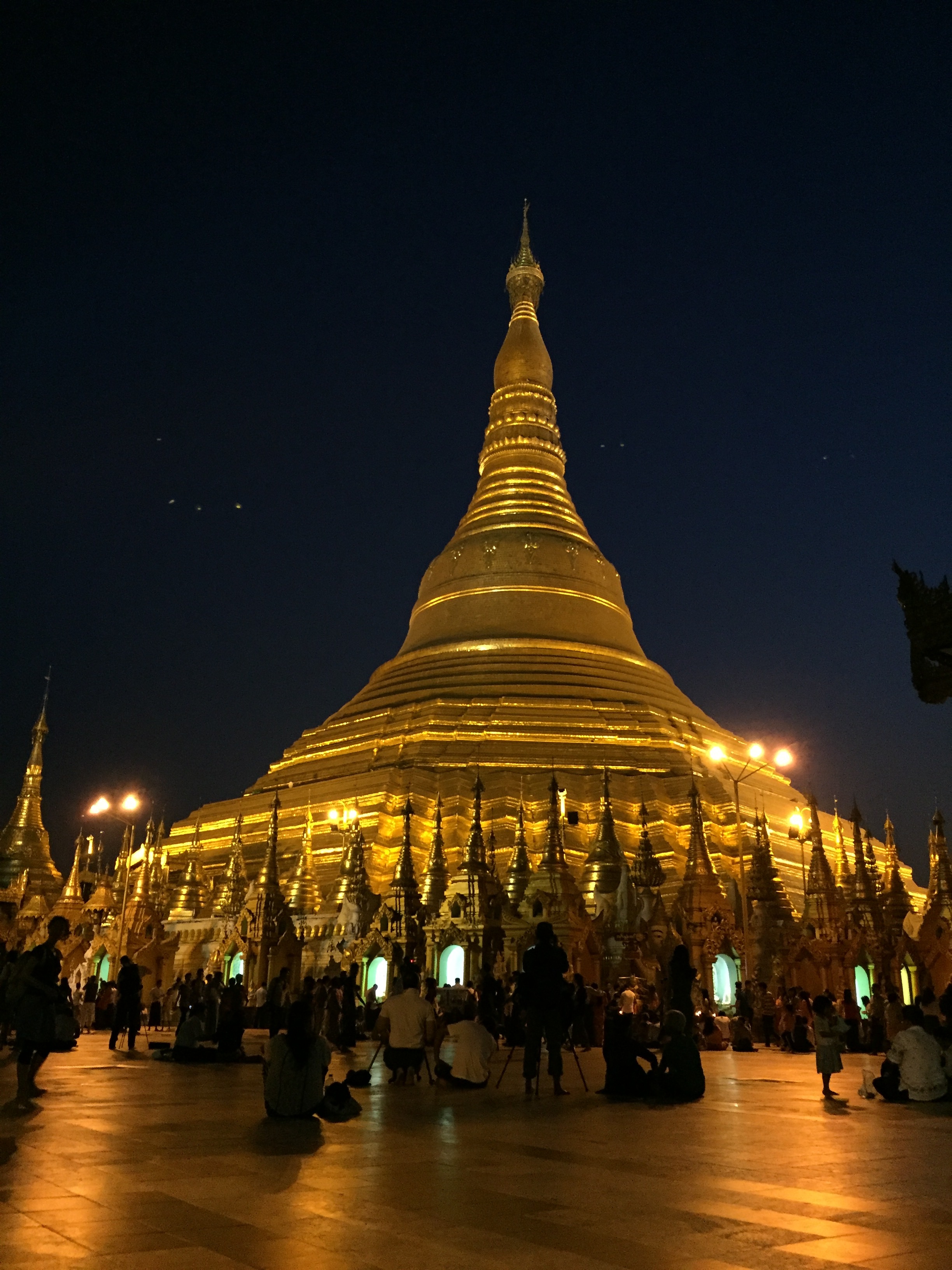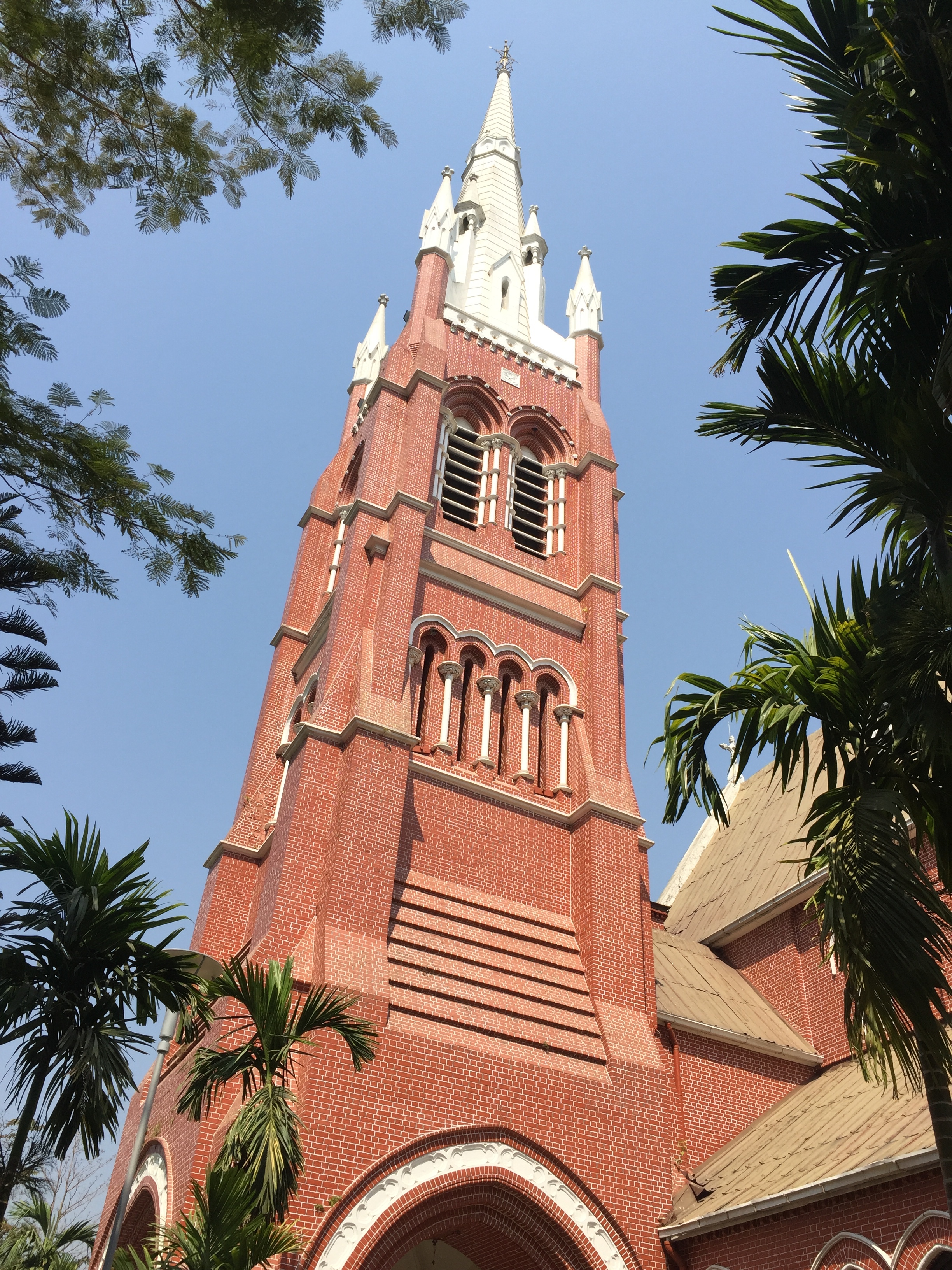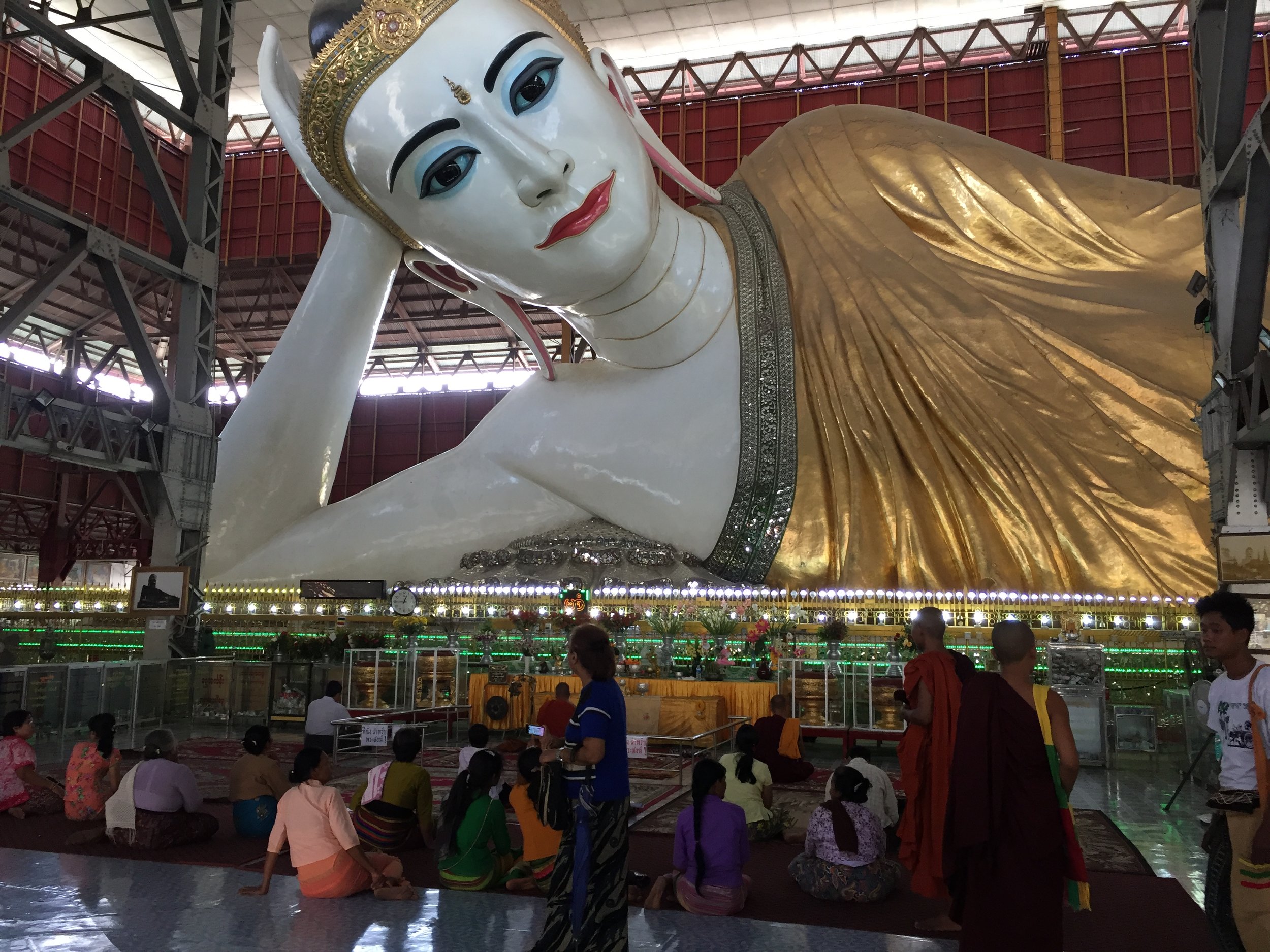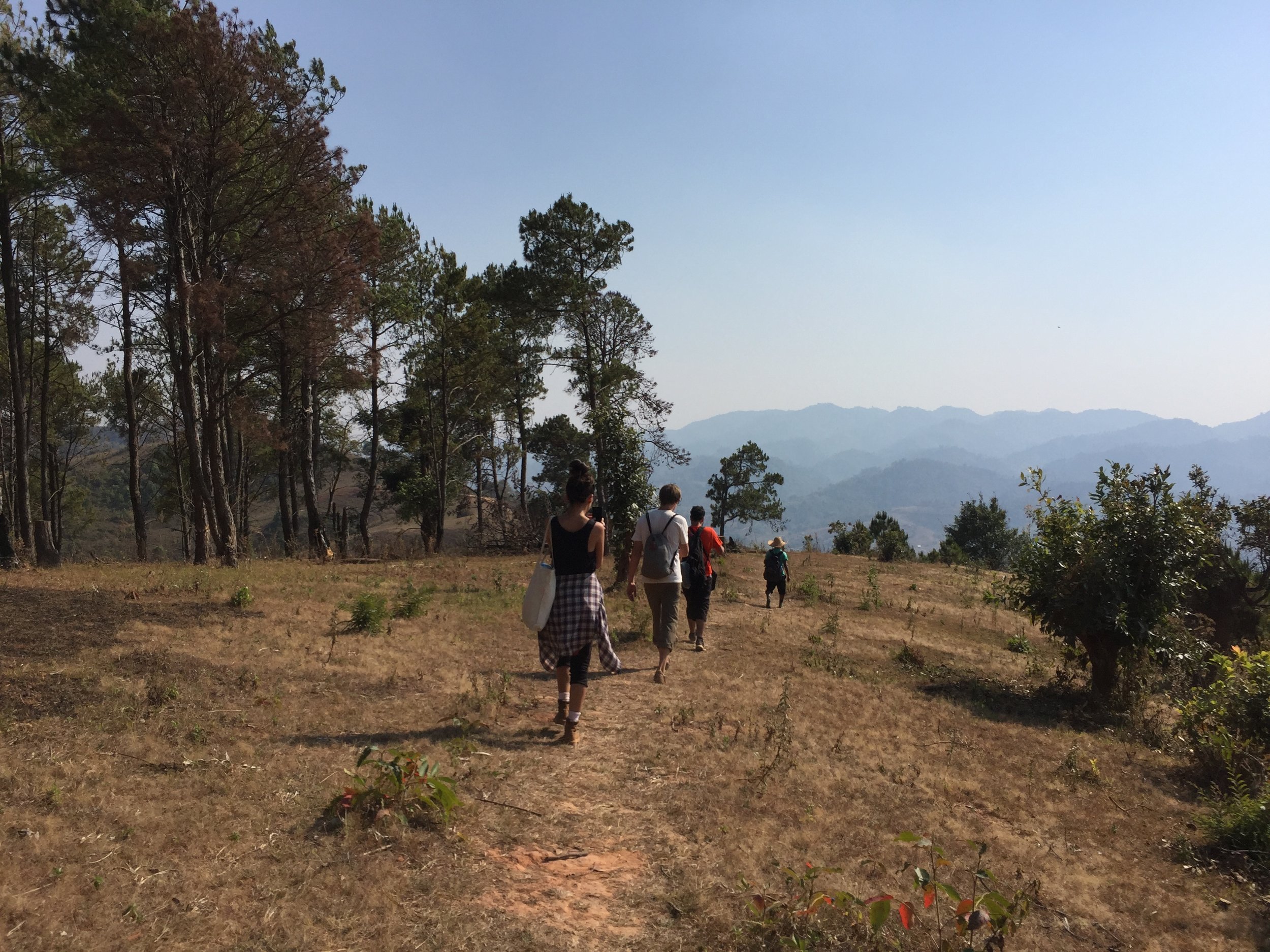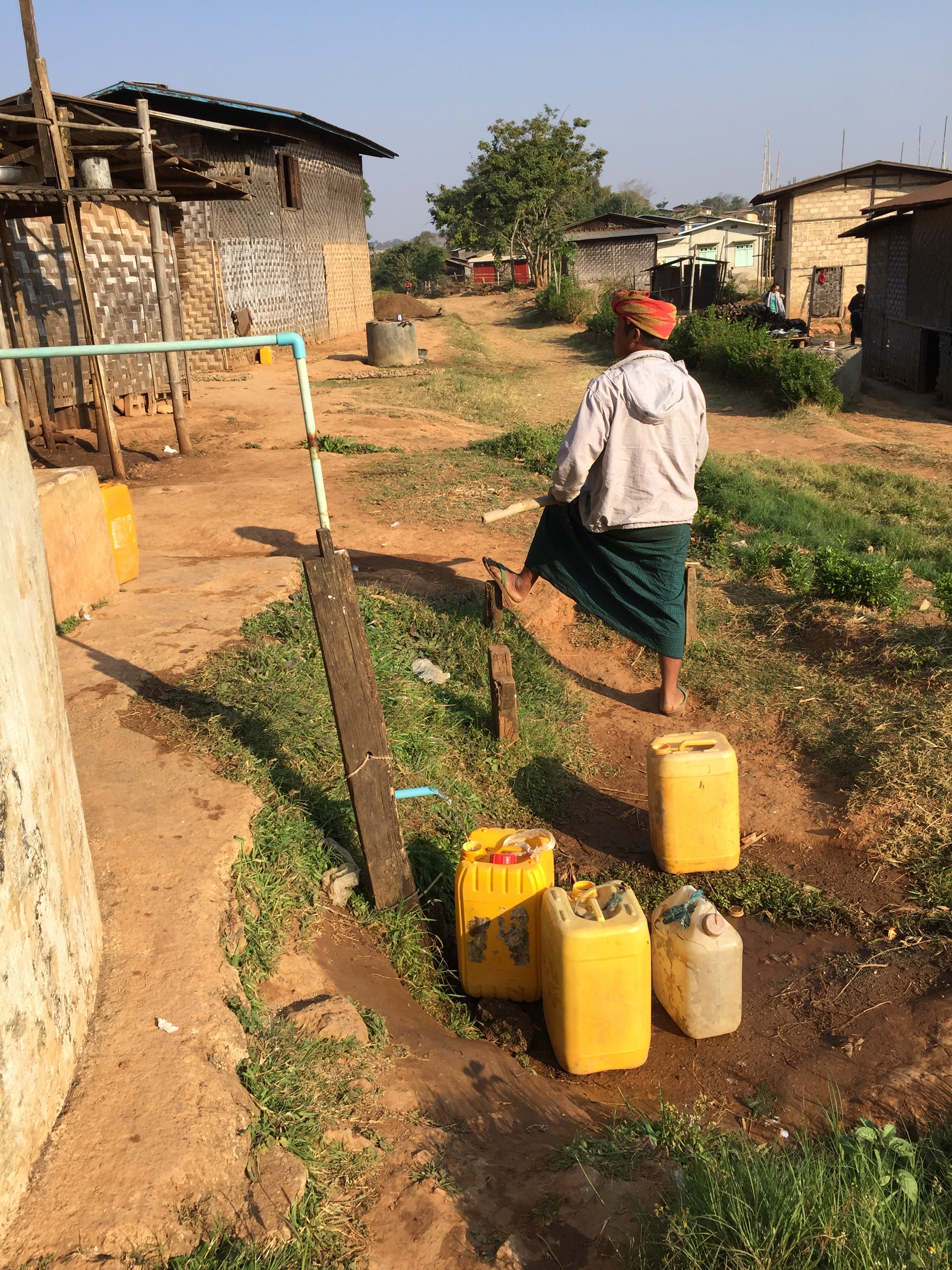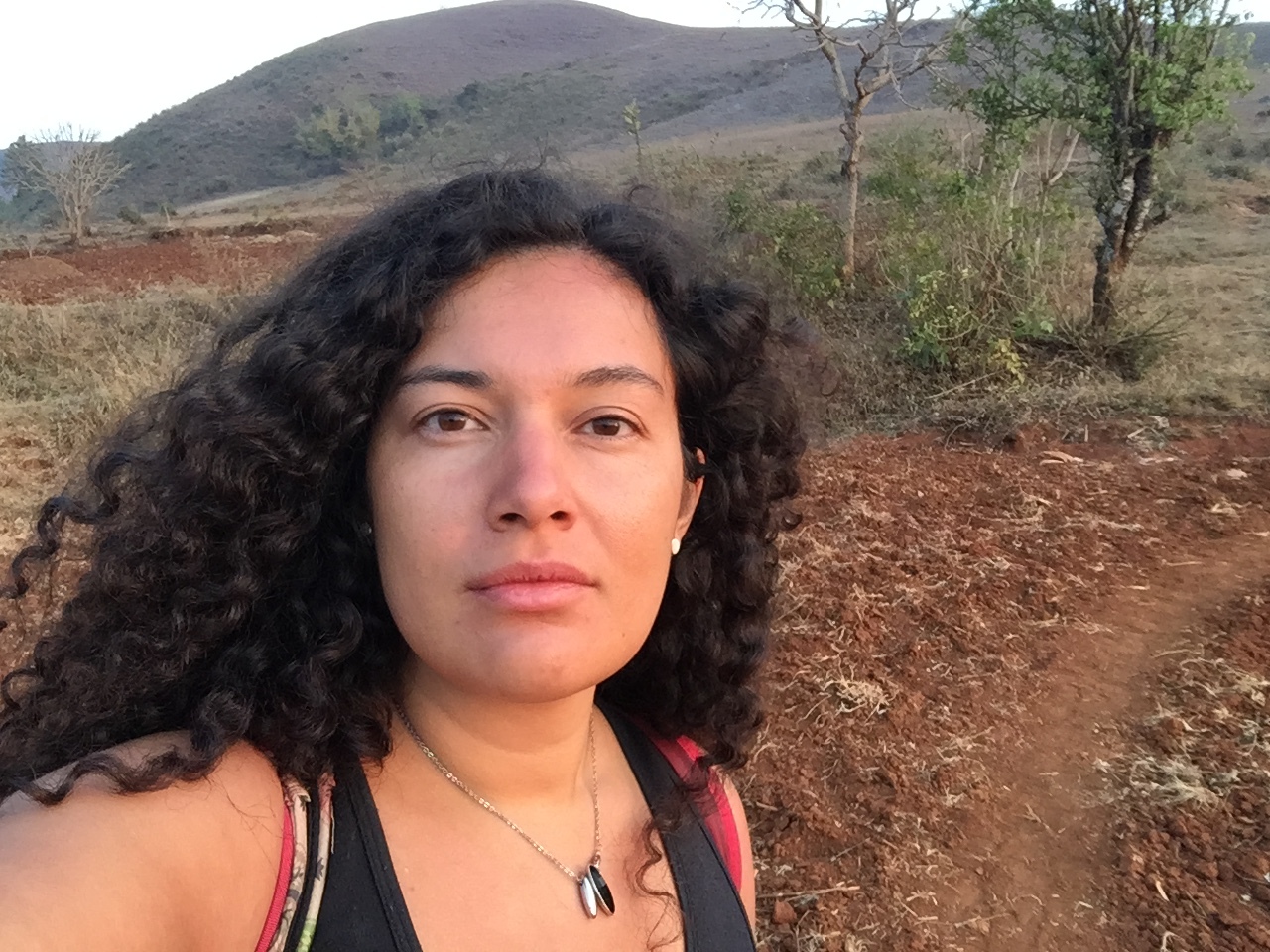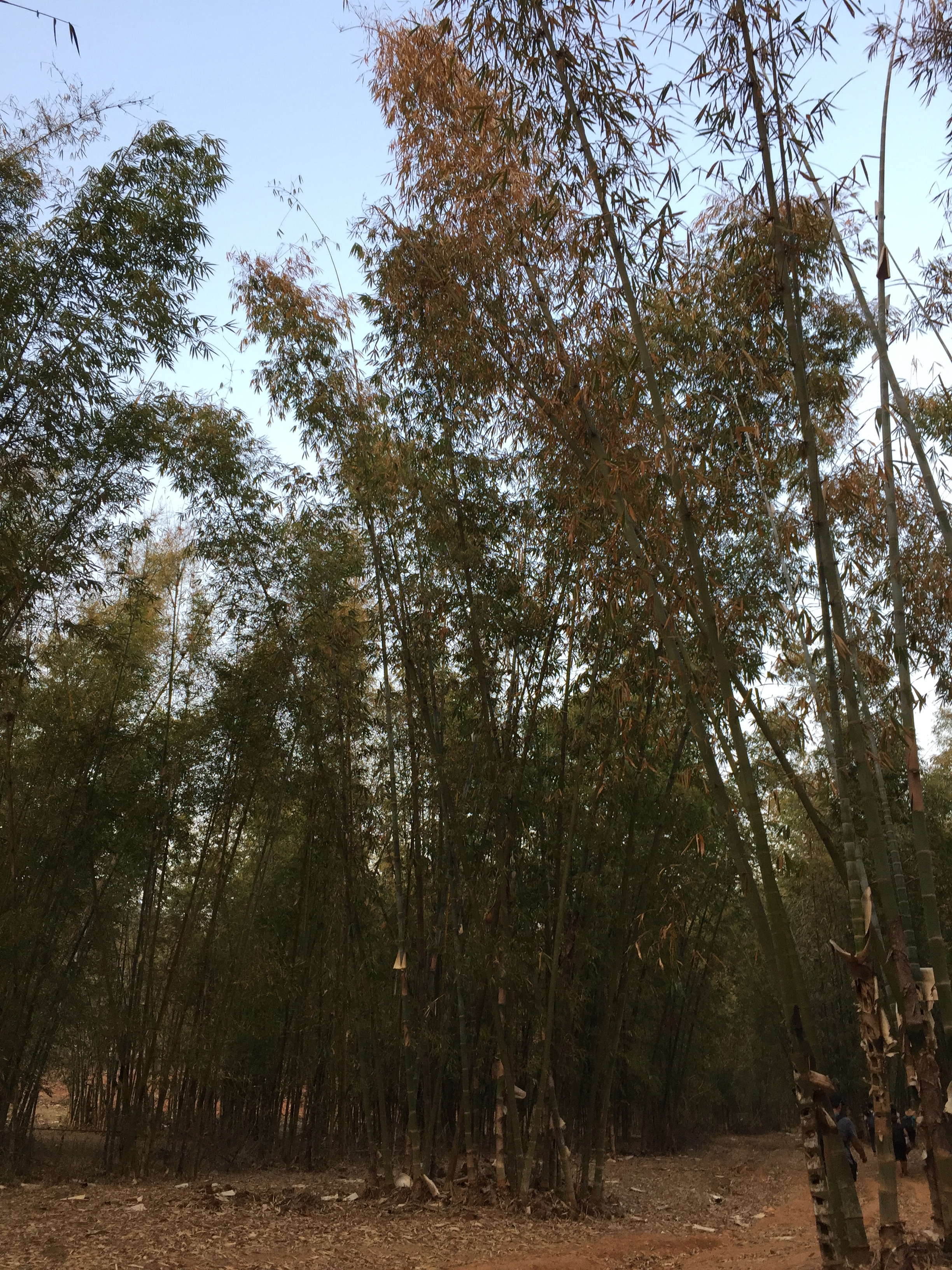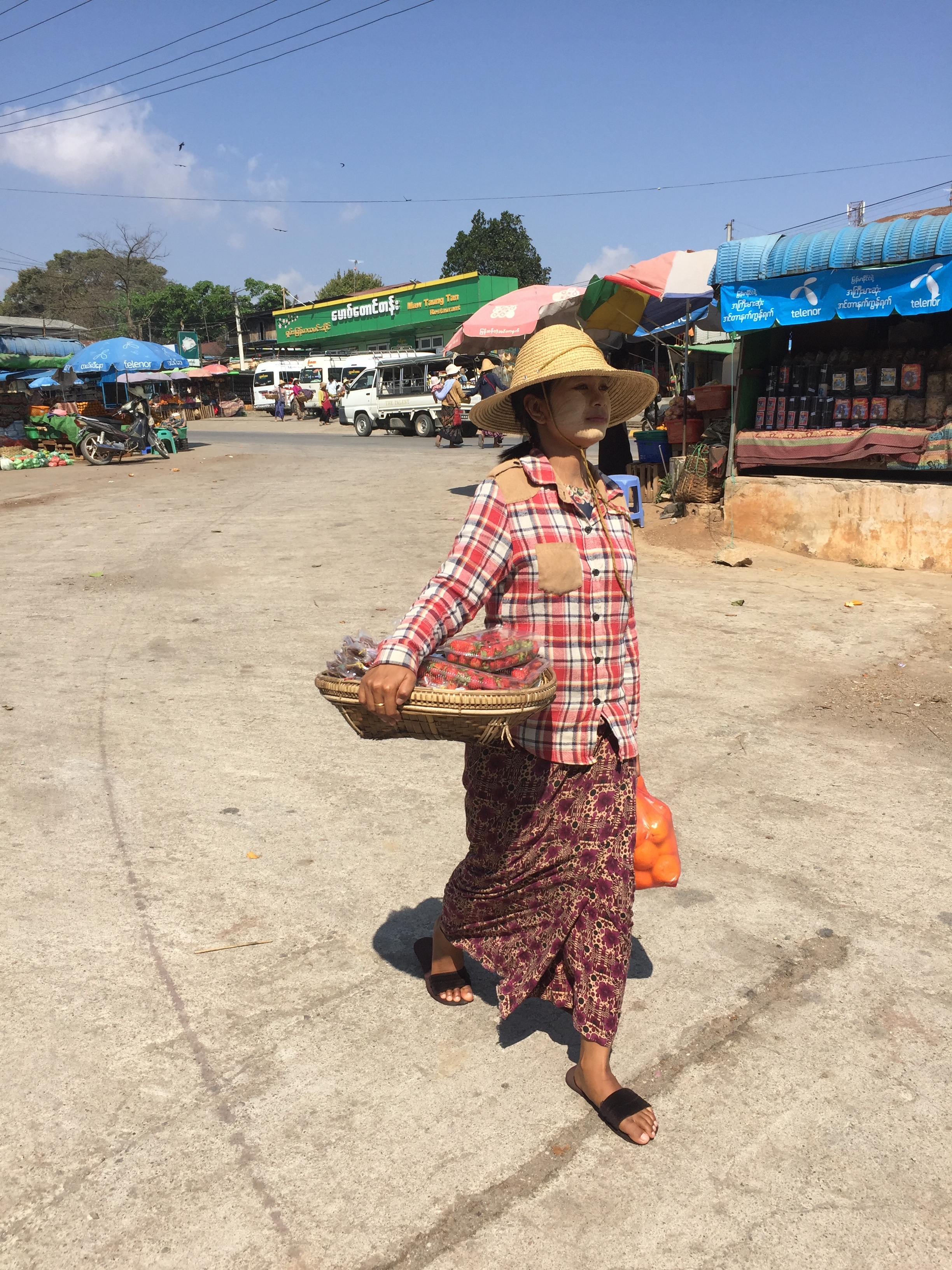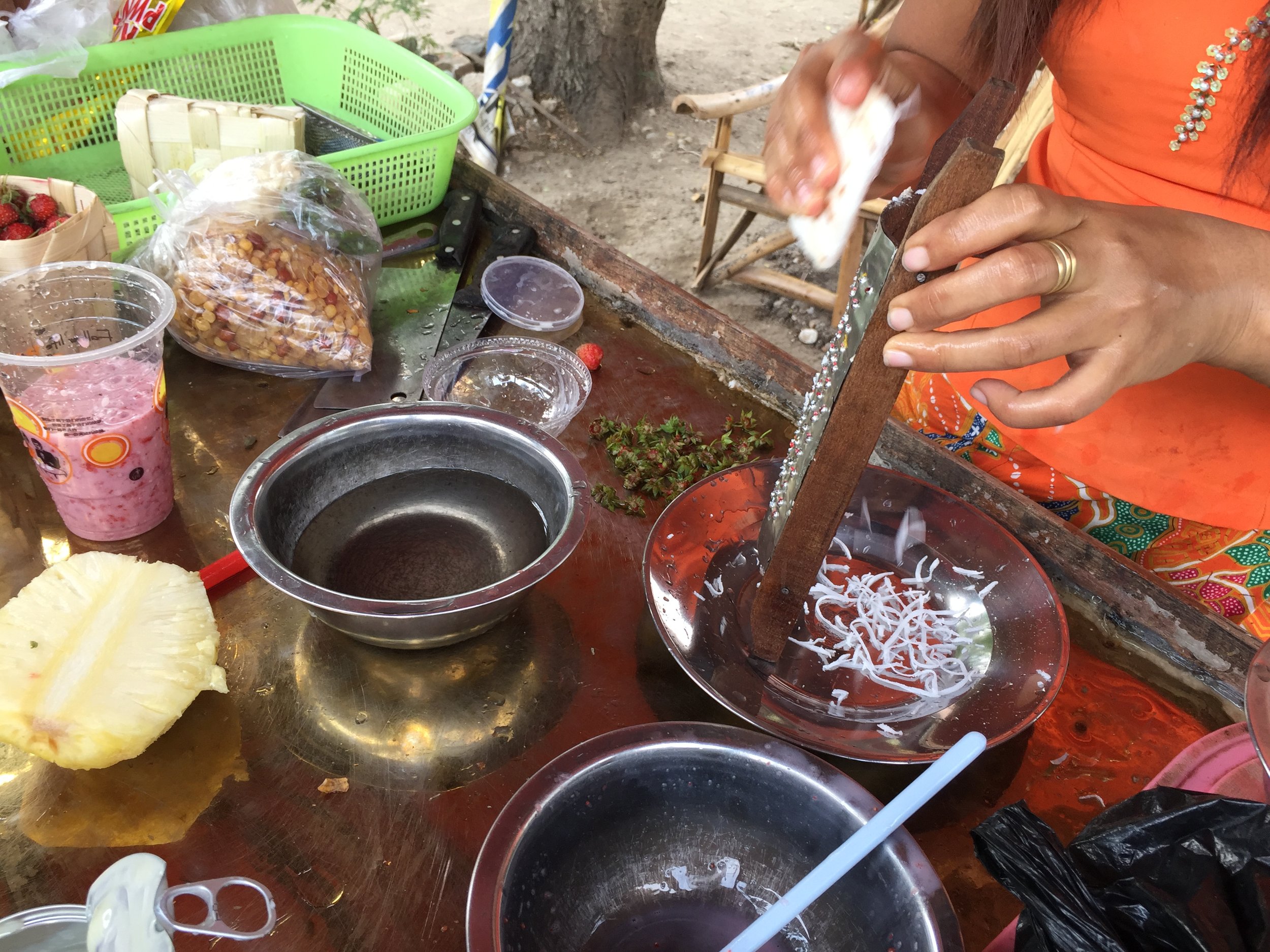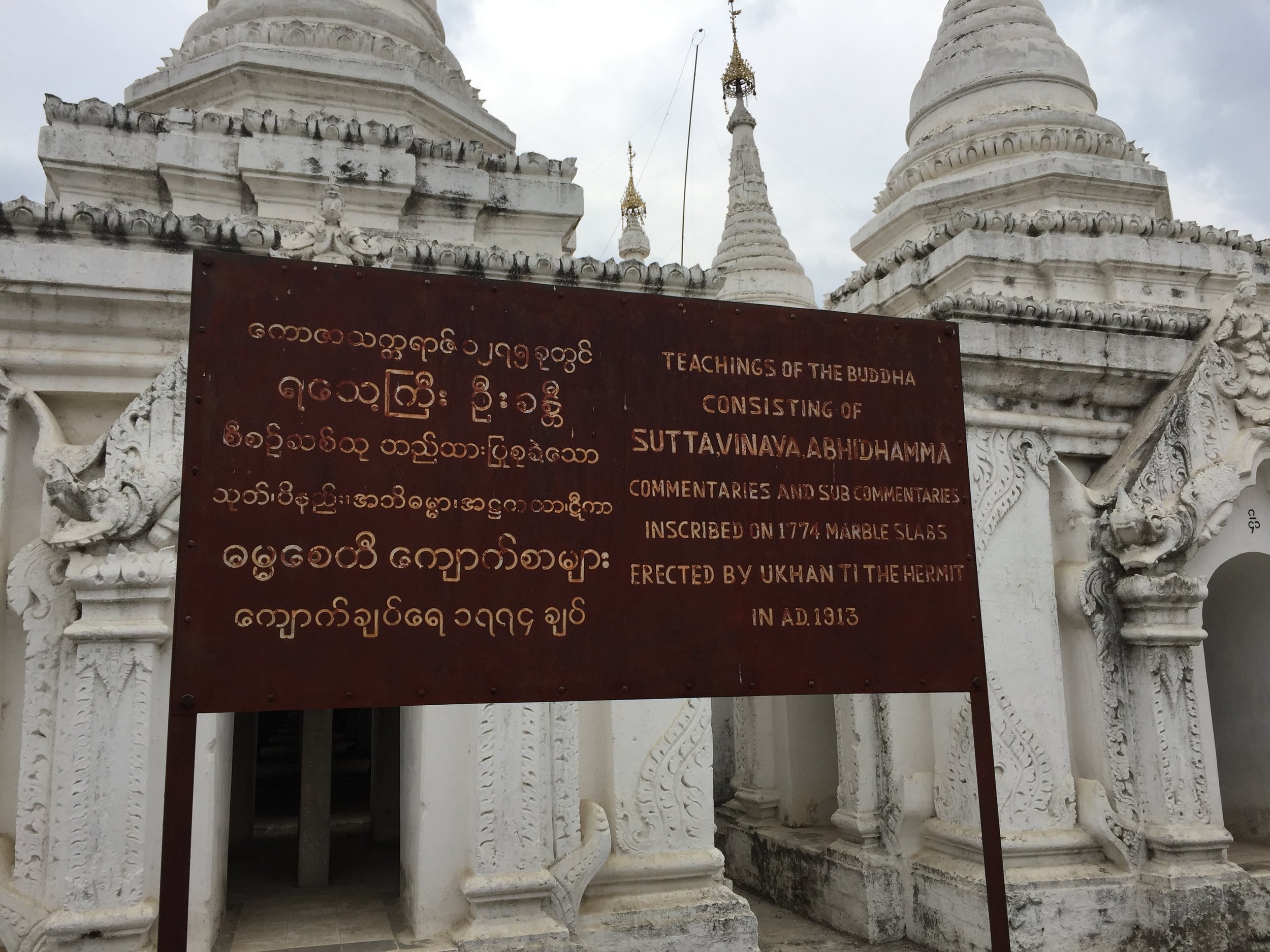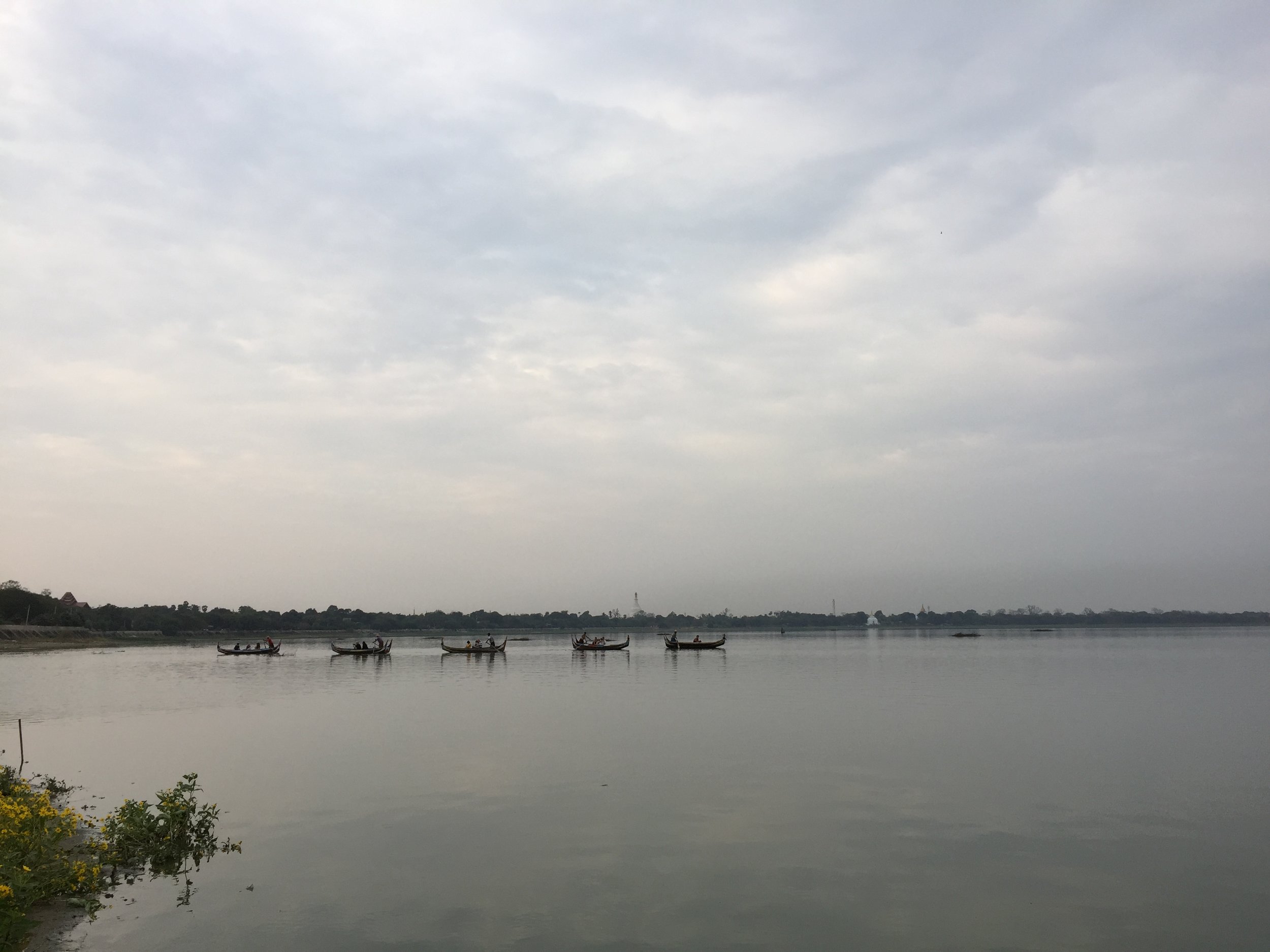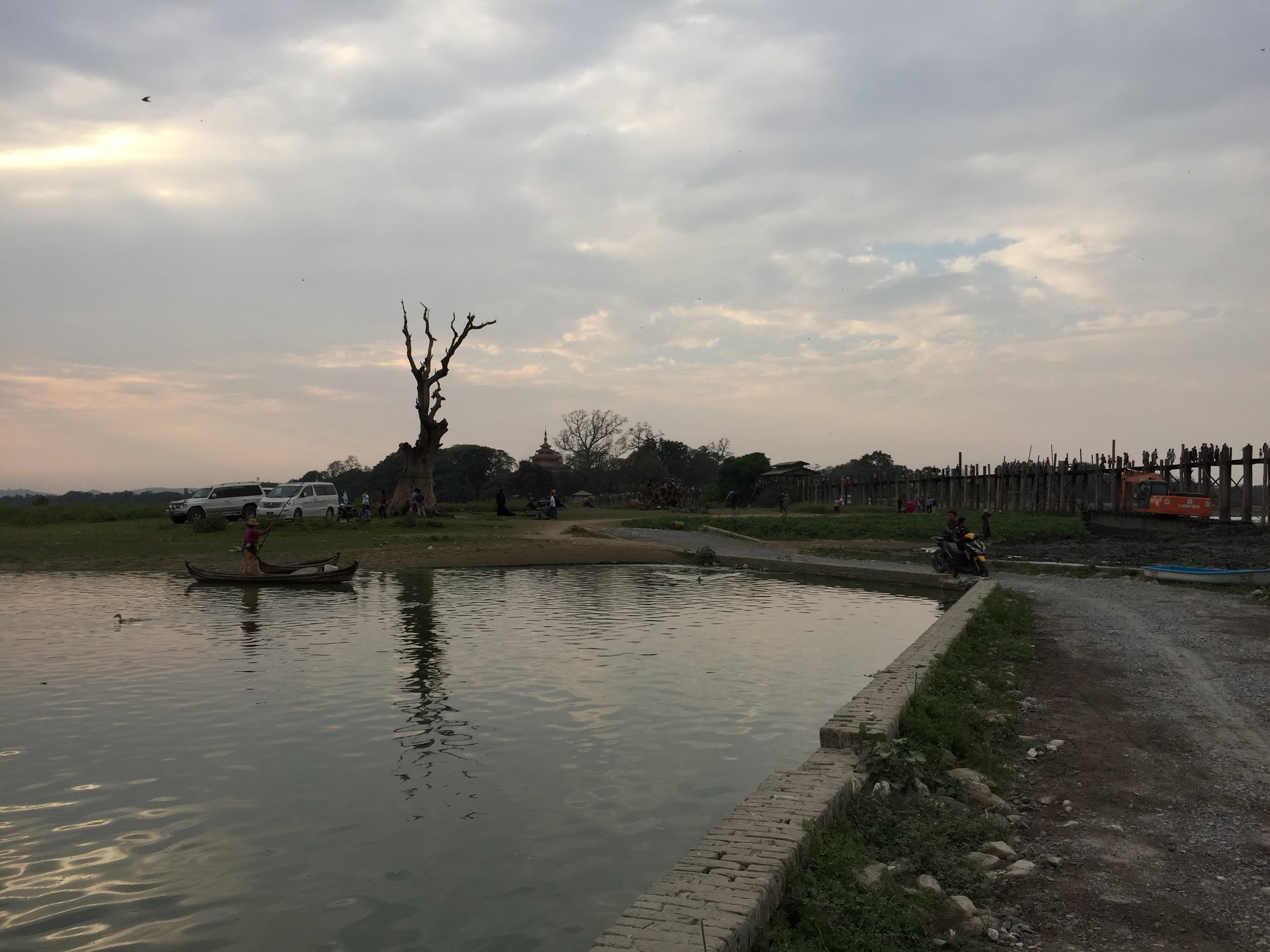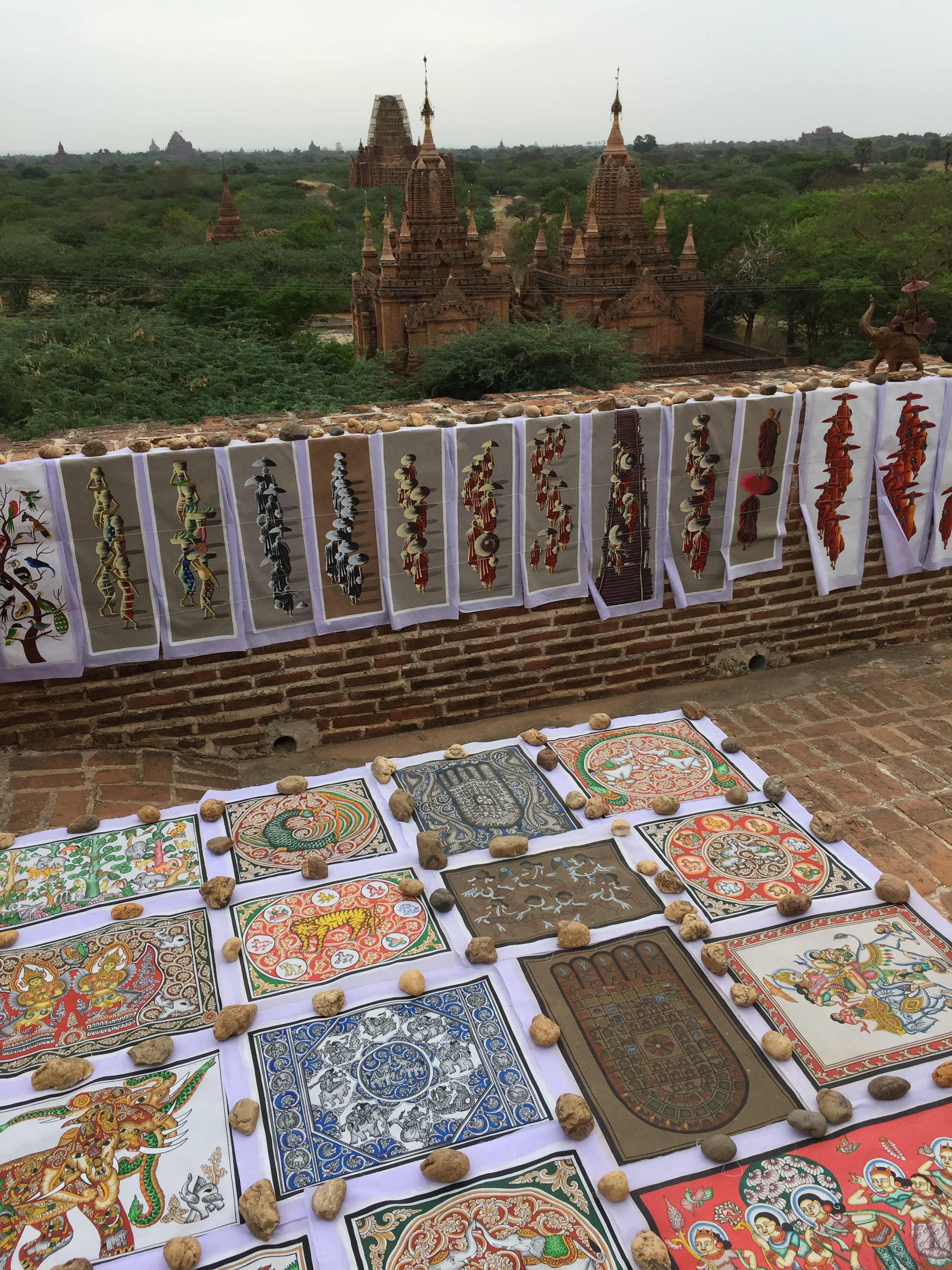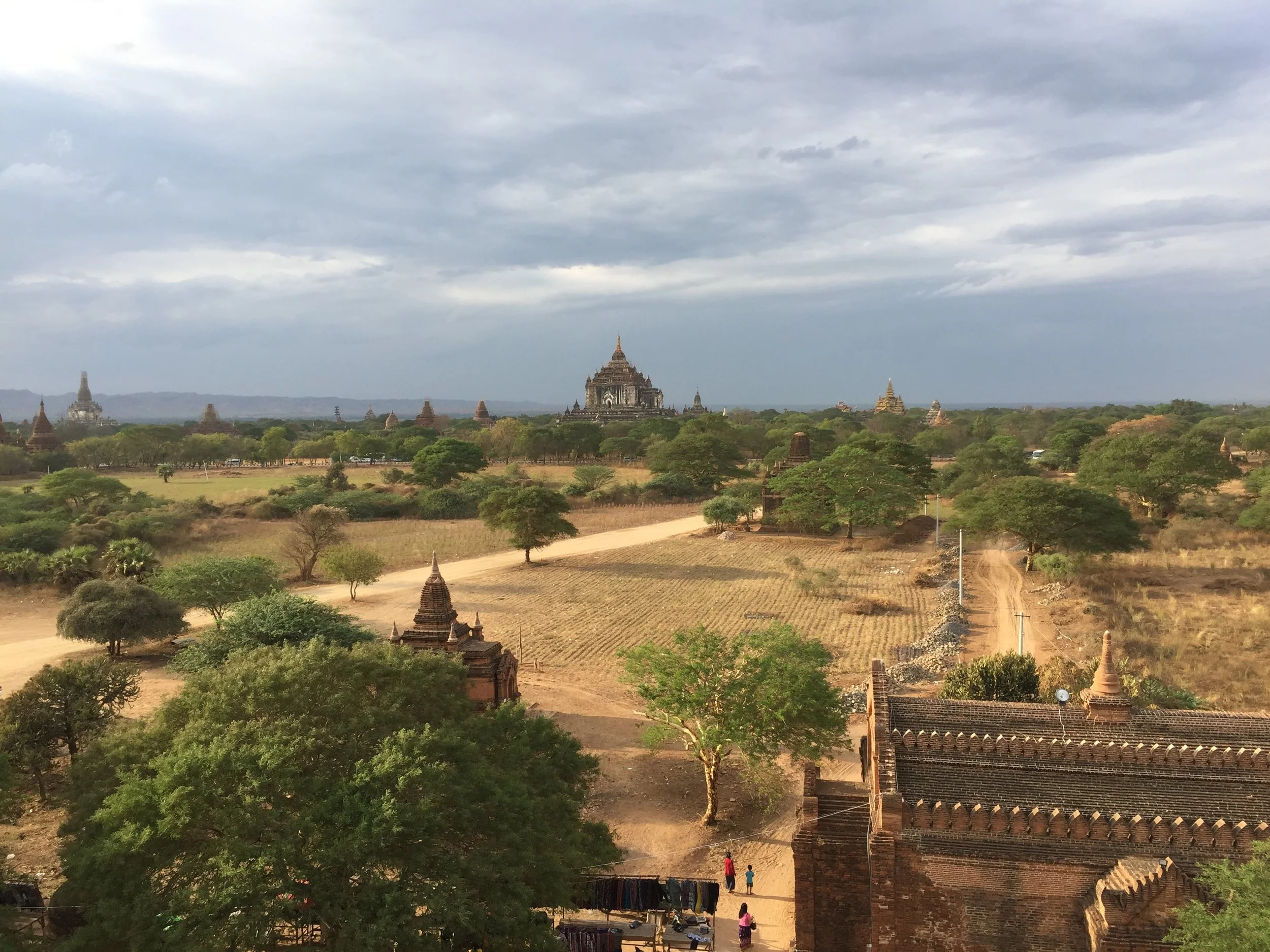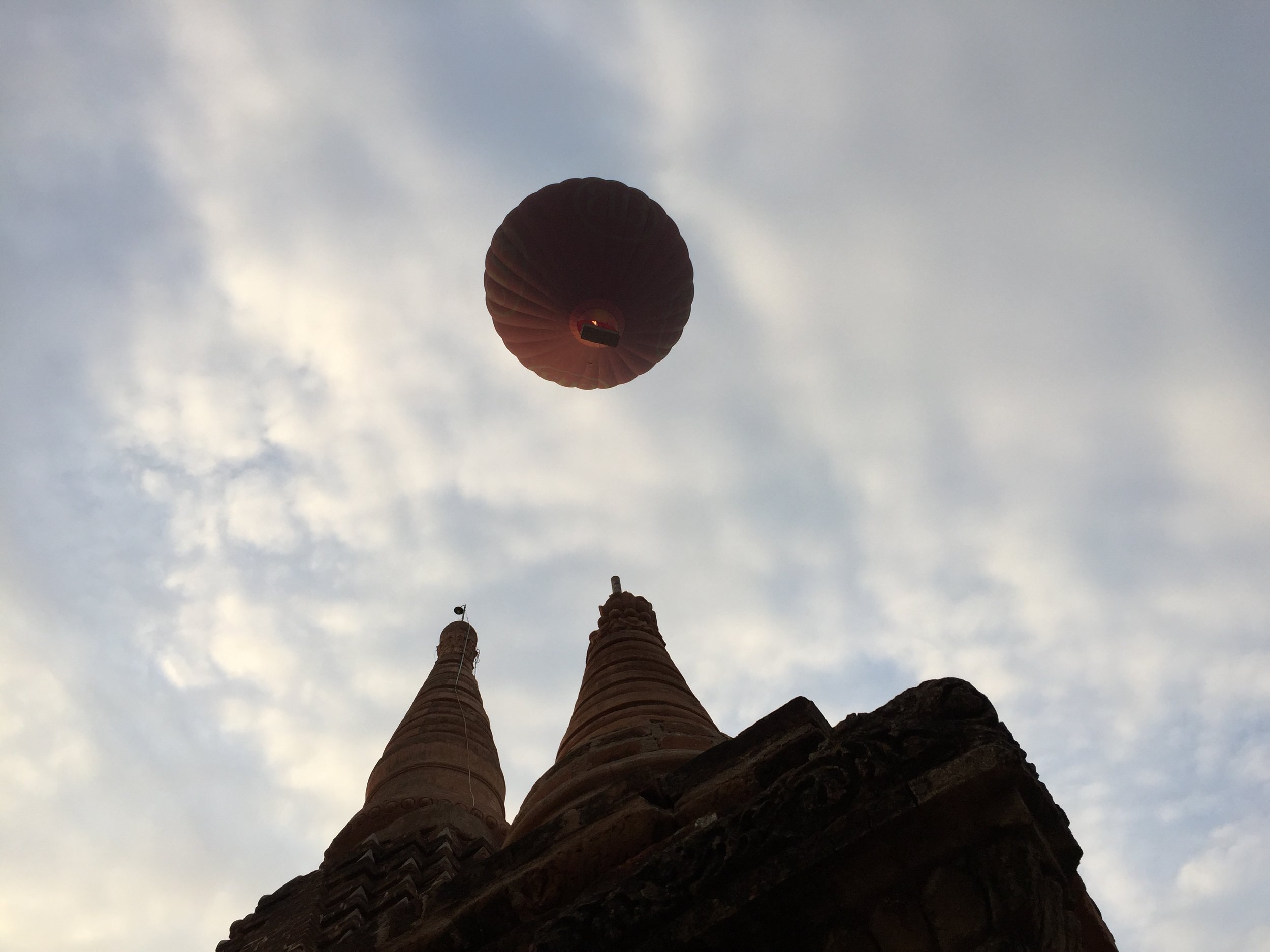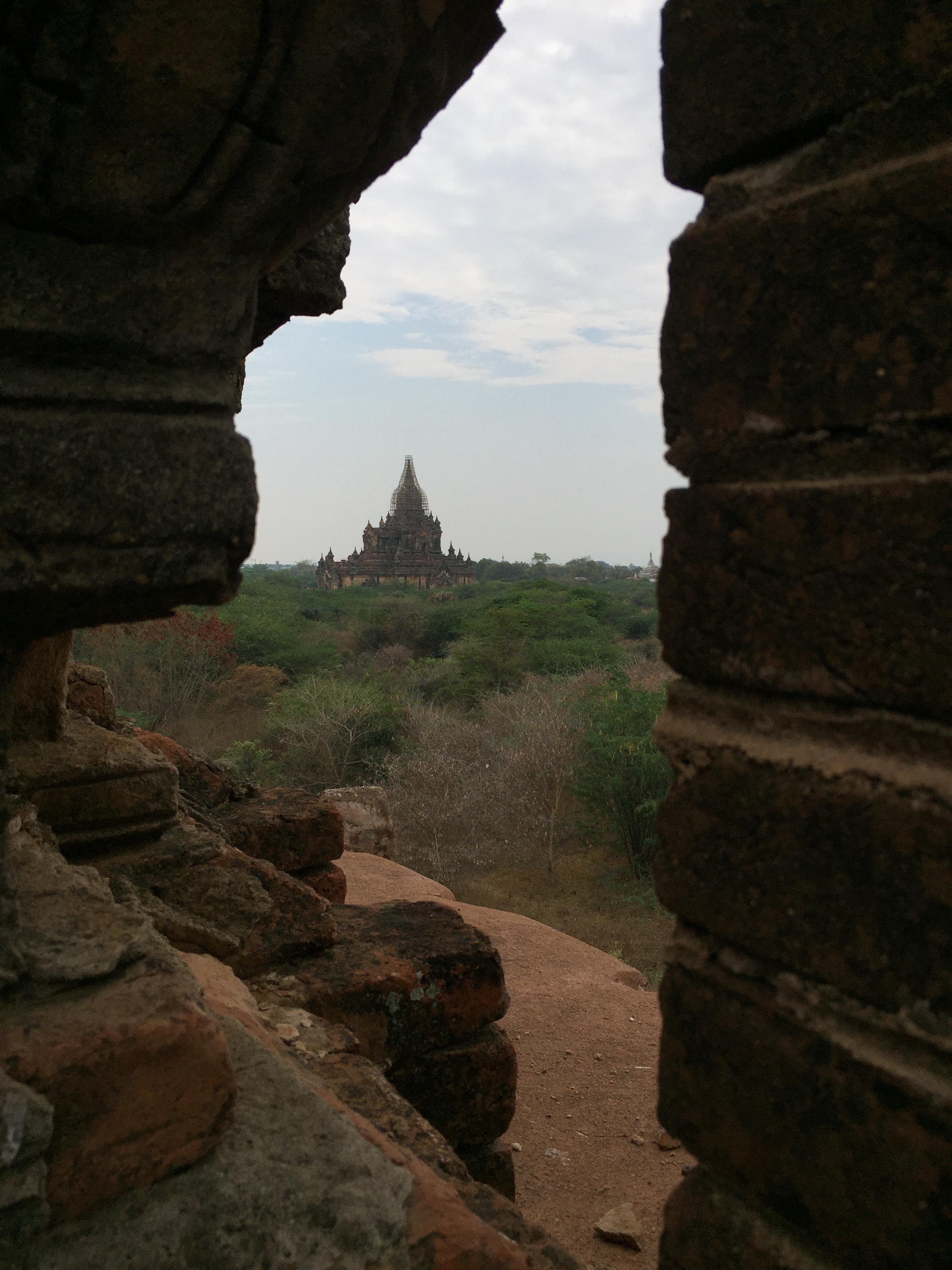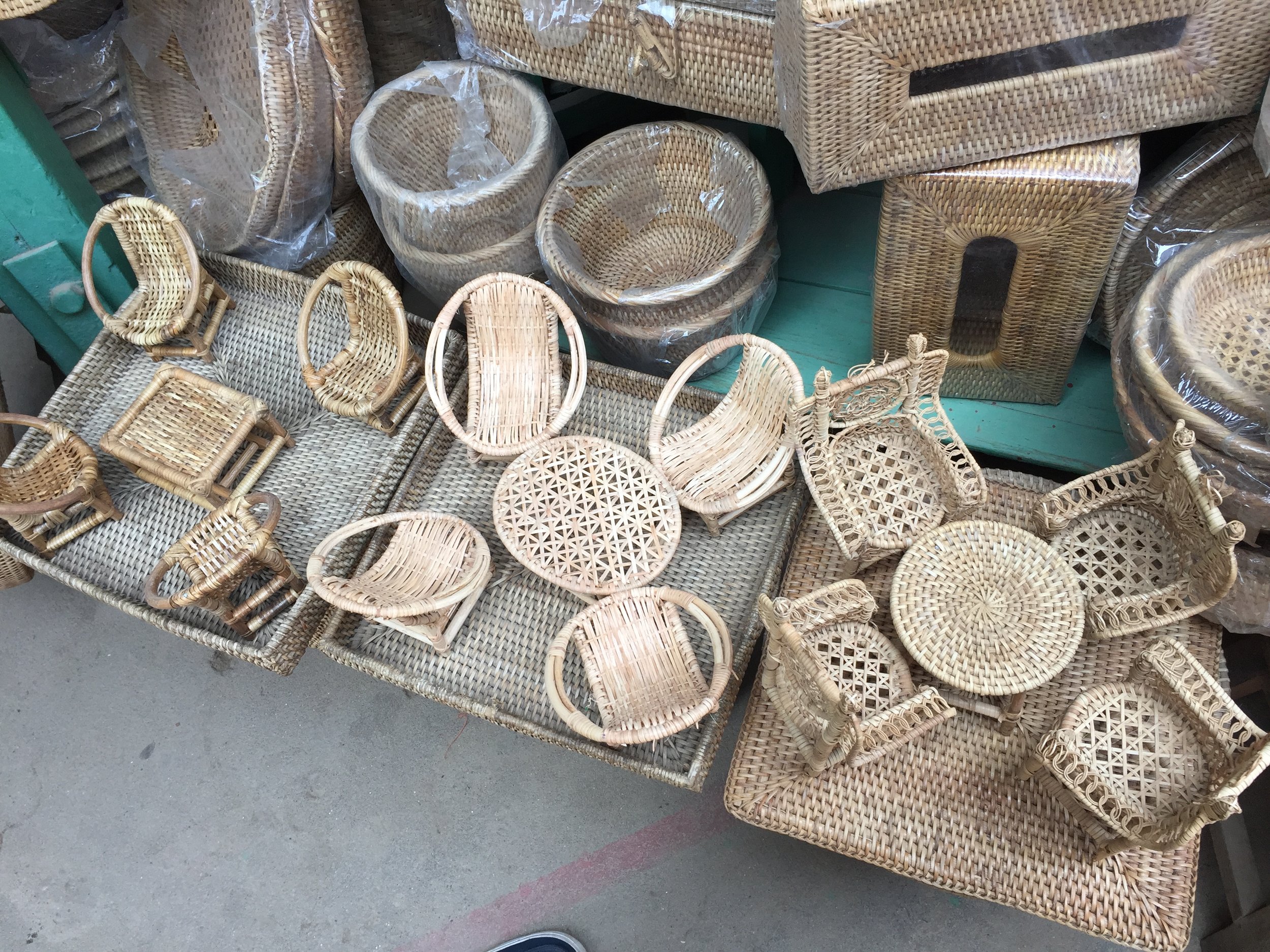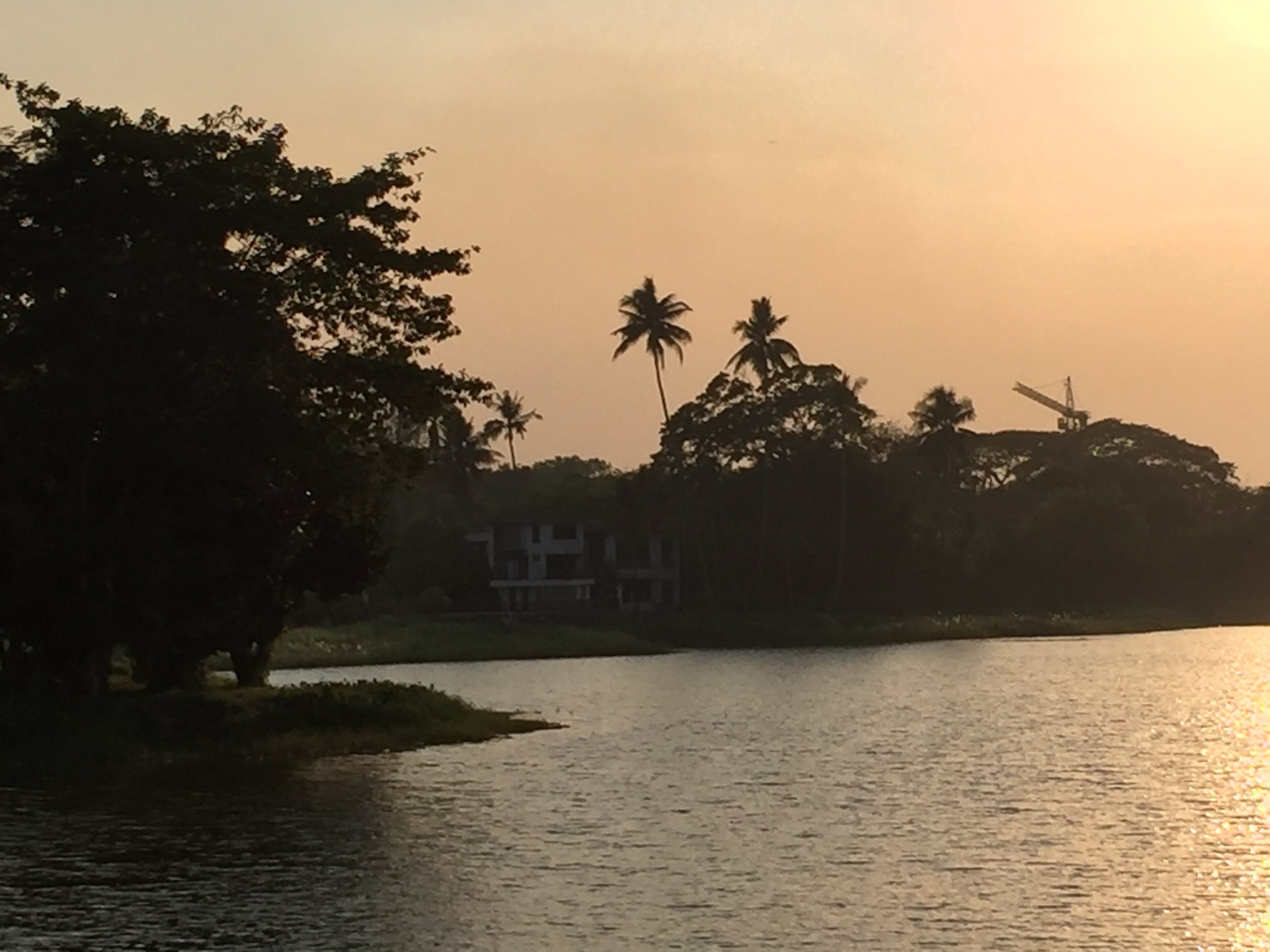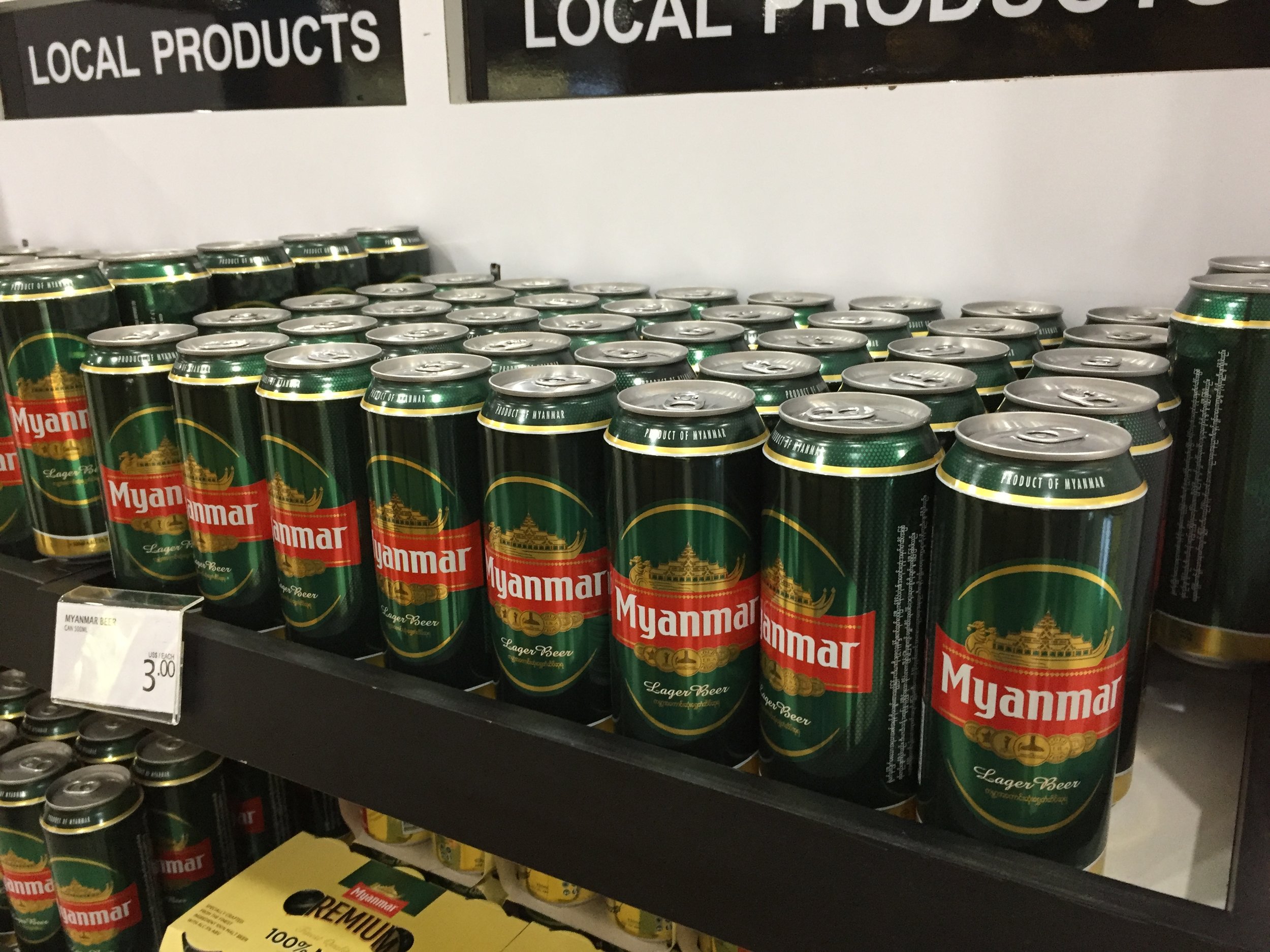To Burma or not to Burma: how Myanmar is jumping straight to the future
Myanmar is a country that transports you to the past while you witness in real time how its people are changing their ways into the future at full speed. A place where children still make toys with water bottle caps, buffaloes are the power force in the fields and monks take selfies with their selfie sticks, while tourists snap their pictures doing so. Where only 30% of the population has electricity at home, sometimes powered by solar panels. Where all needs are met nevertheless, each square meter can be transformed into a bed if you spread your mat and decide to chill. In stations, in parks, in temples.
A country where everyone greets you, says hello and bye bye, and approaches you to help you out. In Myanmar you won't be able to decipher any sign or menu in Burmese. But that won't stain your stay - just because Myanmar people won't let you down. They'll take care of you constantly and smile even if they don't understand a word you say. The kids will approach you to tell you their name and laugh at your hair, clothes and glasses. You'll love their cheeks covered in golden shinny thanaka powder and will marvel at the singularity of everything you see, so unique thanks somehow to years of brutal isolation.
The people of Myanmar seem to be very happy that we're rediscovering their country, that we start coming in troves, that we are there to see how they make it happen in record times. Whether they would regret their enthusiasm for tourism in years to come, or whether they would regret following our steps and possibly making the same mistakes the Western world did, well, it remains to be seen.
But as of March 2017, Myanmar is a feast for the curious, the sensitive, the adventurers, and the believers.
If my words are not enough for you, here's a video made by Andrina and Micha from Postcards for your kitchen, who we met during our time in Vietnam.
You can read about their trip to Myanmar here. As for my account on what Myanmar has to offer, keep reading.
We left Chiang Mai on 1st March and we took a flight with AirAsia to Bangkok first and with transit to Yangon. Friends had warned us that Myanmar had nothing to do with Thailand or South East Asia, and that it felt almost like Africa sometimes. We had read a couple of blog posts talking about how expensive the accommodation could be, how low quality the rooms were, how bad Internet WiFi was everywhere.
Once in Yangon International Airport, we were met with a flashy brand new airport that had a very cool innovation: anyone waiting outside for friends and relatives could see through the passport control area, meaning that they didn't need to get anxious and anyone with troubles could somehow alert the outside world. It's the first time I've seen something like that!
Another big first impression was to see all men wearing long skirts. Only a few days later we learnt that the longyi is what most men in Myanmar wear instead of trousers, and with the passing days we started to see how elegant and practical they were. By the end of the trip, we were absolutely sold!
Our first ride on a taxi from the Yangon International Airport to our hostel in the 20th street showed a city that had nothing to do with the picture our friends had painted. Modern buildings, the compulsory big traffic jam, city lights, huge avenues. We left our bags and went straight to the 19th street, which offers the best street food in Yangon. I would argue that the 20th street is the one to go if you want to eat like a local, but I'm not going to deny that the 19th street offered a visual show in terms of barbecue choices, a long row of locals and tourists getting drunk for pennies and begging children going from table to table. We had two overpriced dishes, but it was all compensated through the long drinks: Whiskey Sour and Rum Sour for 1€.
Next day the exploring started along the streets near our hostel. The sun was shinning and the city was buzzing: the colonial buildings were showing their pretty colors, and soon we were spotting Buddhist temples and Mosques along our way to the Bogyoke Aung San Market. Fruit stands were abound, and we saw for the first time the Myanmar little oranges, which are the sweetest thing and you eat them without peeling them - so yummy! We went through the Sule Pagoda, located inside a big roundabout that is also the main junction for buses. Next to it there are Yangon's City Hall and the Maha Bandula Park.
And yes, those clips hang from balconies so people can reach you things from the house or the other way round. You get the paper clipped from the street and you pull the string to get it up home. Some countries do buckets, Myanmar does clips!
We kept walking only to find more and more delicious snacks, some looking Indian, some definitely Myanmar originals. When we reached the Bogyoke Market, we found out that sadly it was closed but we never understood why. So we changed our plans: we decided to follow the advice on Yangon's WikiTravel, take the circular line train and see Yangon's surroundings for 3 hours. It's not like the line covers a lot of distance, it's just that the trains in Myanmar go REALLY slow. On our way to the Yangon Central Railway station, we spotted large queues to enter the cinema, which for us was surprising being Thursday and in the middle of the day.
We arrived to the station, bought our ticket and some water and food for the 3 hours ride. Which was a mistake and we saw that soon enough: there are vendors constantly coming to your wagon to sell you all type of food, fresh fruit and drinks during the whole ride. The trip showed us the daily life and ways of modern Myanmar, where couples are enjoying the new freedom for PDA, kids are playing quite freely around the train and passengers shamelessly carry tons of wares with them. After a couple of hours, the heat was becoming unbearable and that's why we went to seek for a better spot - we settled for the front of the train, where you could see the train tracks and the wind was entering inside at full speed.
We decided to not to finish the full loop and we stopped at Ahlone Station. After a few minutes walking, we were almost fried under the sun and we stopped in My Garden restaurant for an aircon dose. We've been in hot weather countries, but the sun in Myanmar is something else. From there we, could see the People's Park, which as foreigners we had to pay to enter.
Instead of going in, we kept walking towards the biggest landmark in Yangon, the Shwedagon Pagoda, and we entered from the West. That's relevant because each entrance has a different attraction: the East entrance has a bazaar along the stairs, the South entrance has an elevator, while the West entrance has huge escalators. Unsurprisingly in Myanmar, you need to leave your shoes behind to enter the temple. Surprisingly, that means going barefoot on the escalators. I was scared for my toes!
The Shwedagon Pagoda is hard to describe: the hundreds of small stupas surrounding the main one are stunning, the crowds circling them are colorful and fun to watch, and each corner looks and feels like a town square in Spain. Loud, lazy, cheerful - locals come to Shwedagon to pray, but mostly to hang out, since for them the entrance is free.
We entered at around 17h and we decided to stay until sunset. The night lights of the Pagoda are famous, labeled as Las Vegas Style. Basically all over Myanmar, the Buddhas get neon crowns that change colors once it gets dark. We had then almost 2 hours to walk around and observe the 3D sculptures on the ceilings depicting Buddha scenes, people praying and throwing water at the Buddha of the day of the week they were born and Buddhist nuns getting harassed by tourist in order to get the perfect picture. The sunset was magical and the pagoda got even better at night. We left from the East entrance and there we found all the cute shops with sculptures and gifts to offer in the temple.
Once back in our beloved 20th Street, we had great rice noodles and some amazing snow ice cream with fresh fruit. It was time to sleep and recharge for yet another touristy day to come!
Next morning I decided to keep the adventure going by foot and I left on my own to check the Bogyoke Market, which this time was open. A bit touristy, and still pretty charming, the biggest wares sold there are definitely longyis and jewellery.
Once I was done walking around the market, my next destination was the famous Reclining Buddha. As it was further north, I passed the Bogyoke Park and I couldn't resist entering. The lake was empty, the sun was still bearable under the trees and the wooden bridges were inviting. That is until I heard them cracking under my feet as I stepped, so I took all the pictures while my heart was racing.
I kept walking and walking towards the Reclining Buddha, and the walk lasted for 1 hour. I walked past calm neighborhoods where I was definitely the only tourist around and I was met mostly with curious eyes. The long walk and the sweat had a big reward though - when I finally reached the Reclining Buddha temple, it was just fantastic. Huge, imposing, yet sweet: the sculpture lays surrounded by an enormous hall and with paintings and smaller Buddhas on the side. The most photographed part are definitely the feet and the symbols engraved in them in golden letters.
The morning was gone and I had to rush back to the hostel: we were taking the evening bus to Kalaw and due to Yangon's notorious big traffic jams in the afternoon, we had to leave the hostel 3 hours before the bus departure. I tried hard to go back using the public bus, but there was no luck: the employees yelling the stations and calling you to hop on the bus couldn't help me finding the correct line and forget about deciphering the bus signs. So I took a taxi, we got a big bowl of Kyay Oh soup before checking out and got in a taxi with other 2 travelers.
On our way to the taxi station we passed many interesting buildings and saw the Inya Lake from afar. I marked it down to visit it at the end of the trip, when we had one more day in Yangon. Already on the bus station, we found the bus company office and waiting room under construction, with operators trying to figure out the sliding doors while customers waited patiently for the bus to arrive. Works as a metaphor of Myanmar as a country: just making do and pushing towards the future constantly, no matter what.
The bus ride was supposed to start at 19h and bring us to Kalaw by 7h next day. We started at 20h and stopped at around 22h in an amazing rest area full of shops and night lights, where we again bought everything we could in the 15 minutes we had. We slept not that much, since at 4:45h we arrived to Kalaw. A few seconds out of the bus made it clear that Kalaw is in the mountains: it was just freaking cold. Without feeling our fingers we looked for our hostel and when we finally made it, we received the news that our room wouldn't be ready until 12h.
Breakfast was going to be served at 7h, so we spent the next 2 hours getting to know the two other travelers waiting for their room. They had even less luck than us: the bus dropped them at 4h in Kalaw. The town is famous for being the starting point for the trekking towards Inle Lake and our friends had shared with us the contact of their guide, who could take us as a group for 39.000 Kyat (30$) during 3 days and 2 nights with meals and accommodation included. The only catch was that we needed to create a group of 6 people in order to get that group price. In the bus we had met 2 other travelers who were up for it, and chatting with the other two unlucky fellow travelers, we completed the party of 6.
A phone call to Salai, the guide our friends recommended, was enough for him to come and meet us in the hotel. He arrived at 8h, and while we were having breakfast, he explained to us the details of the trekking tour: we were going to leave next day, walk 20 kms, sleep in a village, walk 20 kms more, sleep in a monastery, then walk 16 kms and take a boat through the Inle Lake and finish the adventure in Nyaungshwe, the main town near Inle Lake. A cook would follow the same itinerary on a motorbike with our food and will cook it before we reached each stop. We were delighted with the plan, a bit nervous for paying cash in advance, but happy that everything was sorted so conveniently.
At around 10h we got our rooms and after a few hours of sleep, we checked Kalaw's market. After paying for the tour and having some food, we realized we needed to get money from the ATM, but oh, surprise: the 2 ATMs in the town were rejecting our credit cards. It took us a while to figure out that the problem was the Internet connection: 3G reception was working well for us through the SIM cards, but WiFi everywhere had been a disaster. ATMs are connected to WiFi and the whole town had the network down. So no money.
Luckily Cihan, as a good German, had some Euros as backup; unluckily it was Saturday and the banks were closed. We asked in the hotel reception what could be done and the owner told me smiling that he could exchange Euros to Dollars for us. When he saw the relief in my face, he added: "Don't worry in Myanmar, we always find solutions.".
We spent the rest of the day hanging out with our new friends and getting ready for the next 3 days walking Myanmar.
Next morning we had an avocado salad for breakfast (avocado, onion, pepper, tomato, peanuts, lemon juice and lots of salt - a guacamole on steroids) and we all met at the Jungle King office. There, another 2 travelers joined our group and soon enough the 8 of us left for Inle Lake!
The first day was long but full of learnings: Salai walks really fast but also takes his time on long stops to explain about the terrain, the culture in the villages, the differences between tribes, how each tribe calls things, about the trees and plants; everything you are curious about, he will be able to explain. He made sure we didn't walk much between 13h and 15h so we wouldn't melt under the sun and that the food was on time waiting for our arrival.
The further we went into the trek, the more we understood the words of our friends about Myanmar being like Africa. In terms of cities, surely African cities had nothing to do with what we were seeing, but in terms of landscape, we felt in the African savanna. And when we arrived to the village where we were spending the first night, we felt transported centuries back. There was one solar panel powering the whole village, which meant that electricity was limited, and the water supply as well. Our common room was prepared and had the most amazing blankets; dinner was ready and, after eating, we sat around the fire before going to bed. Laying down before sleeping, our 3G connection on our smartphones was perfect - in Myanmar one lives in the past and in the future at once.
The second day started at 6h - none of us dared to shower outdoors with cold water, so after an awesome breakfast we started walking again. We passed even more fields, we learned about the different crops growing in the area and how many young people prefer to keep working the land to be near their families instead of working in the cities away from home.
I'd say the second day was more challenging than the first one, but had a few highlights: after lunch we stopped at the river for a well-deserved bath to make up for the lack of morning shower. We also went uphill a couple of times to catch beautiful views and, right after sunset, we reached the monastery where we spent the night. We shared it with monk children and we got a candle light dinner before going to bed. We were destroyed!
In the morning we were all very excited for the boat ride - basically we were looking forward to stop walking. Too bad that in order to reach it by lunch, we had to speed up and walk the 16 kms in less than 6 hours. The landscape quickly changed, the fields got greener and the villages larger and more developed. We had an awesome lunch waiting for us in a restaurant along the road and next to the river, and that's when we said goodbye to the chef for our trip. He was definitely a big highlight of the trek!
We hopped on 2 boats and followed the river connecting to the Inle Lake. We were going for a tour around the shops in Inle, but first we got a glimpse of the water gardens and how people grow all kinds of veggies on the lake.
We then approached the most touristy part of our Inle Lake experience. We first stopped at a silversmith workshop where we got a demonstration about working with silver. The shop had a huge collection of jewelry on sale, but prices were all but shy. Still, I couldn't help myself!
Each shop along the river was a few meters away from each other and all offered complimentary green tea. Next stop was a workshop of handmade souvenirs ran by Karen women, who are a prosecuted minority in Myanmar. There was a Karen lady in the middle of the shop posing for pictures and some information about the tribe. Our last stop was an umbrella workshop, where one could see how the famous and colorful Myanmar umbrellas are made. All pretty fascinating and tempting, but since we don't have space in our bags, buying souvenirs is out of the question.
As we entered the Inle Lake, we passed a temple with tens of stupas by the shore. And after a few minutes racing in the middle of the Lake, we got closer to the fishermen, who from far away look like ballerinas. They use one of their legs to row their boat, which frees their hands to throw their nets. The whole choreography is absolutely mesmerizing, and they figured that out - quite some of them approach your boat and pose for your picture. And they are actually great at it!
We crossed the lake at full speed and that meant getting really wet. We could see locals in other boats passing near us with umbrellas protecting themselves from the big splashes. The air got really chilly after so many days of pure heat, and we were relieved when we got out of the boat in Nyaungshwe. It was time to say goodbye to Salai and some of our group members, but not before taking a couple of pictures: we survived!
We dropped our bags in our hostel and got a very well deserved shower. Even after showering, the white towel turned brown: the dust of the road got really deep in our skin. Right after, we met for dinner at the "night market food stalls", which in Nyaungshwe is basically a street with 6 restaurants next to each other catering to tourists. But that in Myanmar doesn't mean anything bad: the food was just delicious and each dish ranges between 0.50€ and 2€. We had a blast, ordering much more than we could eat, but we just couldn't stop. Tea leaves salad, avocado salad, shan noodle soup, ginger salad, Inle Lake grilled fish, deep fried veggies... we ordered almost the whole menu.
Next day we got lost in the Mingalar day market: food, clothes, kitchenware, and a sea of smiles. As soon as we got hungry, we ended up again in the same street as the night before stuffing our mouths with everything we saw. We paid a visit to a happy hour bar that offered awesome long drinks for 1€, but only until 18h. And guess where we had dinner?
Yes, we didn't do much else apart from eating in Inle Lake, but that was because we had seen the lake the day before and none of the activities around looked appealing. There's the Cat Monastery, which has the best and worst reviews online. There's more souvenir shopping and a few temples, treks and exploring to do. But we have to admit that after 3 days walking non stop, we got just lazy. That meant we probably missed awesome places, like Instagram loves to remind me.
Next morning we took a 8 hour bus to Mandalay together with one of our fellow trekkers for around 15.000 Kyat (10€). We were super pumped when we first jumped on the minibus, but I was soon in trouble. The road between Inle Lake and Mandalay is full of turns and the driver was just crazy. Only half an hour in the trip I was feeling sick and one hour after I was hating myself for not taking a sleeping pill from start. I took it and suffered one hour more until it knocked me out and next thing I know, we were in Mandalay.
I had done some research online and also have asked for advice and most people said there was not much interesting in Mandalay - but I have to strongly disagree with it. Compared to all other places we saw, Mandalay was definitely not the most charming or photogenic, also probably the most tourist unfriendly, BUT I wish I had a few more days to explore it. Because there's quite some stuff to do and because the logistics don't make it easy for you to see it all in just 2 or 3 days. The city is just huge, so forget about walking or biking. Basically hiring a taxi to tour you around is the best way to go, but not as cheap as everywhere else in Myanmar. Still, very worth it.
First of all, there's the Old City, a squared walled area surrounded by a moat. In order to enter it as a tourist, you need to pay a 10$ ticket that also includes a temple and a monastery nearby outside of the walls. After the first evening fiasco, when we got close to it by walking for an hour only to find out we couldn't enter it after 18h, we checked online and it didn't look that interesting (apart from the Golden Palace, which has really mixed reviews). We decided to focus our efforts on going up to the Mandalay Hill in the morning and check the temples around it.
We then looked for dinner at the night market in 78th street and we not only found excellent food, but discovered on our way an amazing drink: fresh squeezed strawberries mixed with condensed milk and ice. A dream come true for me!
Next morning, me and our fellow trekker Julie got on a taxi to the Mandalay Hill, which was around 4000 Kyat, and left us at the bottom of the stairs. It took us around 20 minutes to go up barefoot, and even if it was early in the morning, the heat was already suffocating and we arrived sweating like pigs. Fortunately, the views were worth it. We could see how the Old City looked like a big park inside, check the temples from above and of course enjoy with the temple on top of Mandalay Hill.
We walked down and checked the walls, got the amazing strawberry drink again and headed to the temples.
First we saw the Kyauk Taw Gyi Pagoda, not a shy temple when it comes to neon decoration. Then we visited Sandamuni Pagoda, home of the "world's largest book", which in fact is written on a thousand stone tablets that are placed under the small stupas surrounding the big ones.
Next was Kuthodaw Pagoda, where we were ambushed by ladies insisting to cover our cheeks with thanaka. We couldn't say no for too long and when we wanted to thank them with a tip, they refused to accept any money. They insisted it was a gift. Which we believed, until they proceeded to try to sell us really overpriced postcards and paintings. We swallowed our guilt and kept saying no staring at the floor.
By now we had visited all the free temples under Mandalay Hill and we went to see the ones we were missing for not wanting to pay the 10$ ticket to access the Mandalay Zone. The Shwenandaw Monastery is famous for its wooden structure and carvings. Right opposite to it lays the Atumashi Kyaung Monastery, which from outside looked impressive. We wandered around and we concluded there was no way to get a good picture without paying entrance, so we decided to take a taxi back home. Call it taxi, call it hopping on a motorbike the two of us with the slower motorbike driver you can think of. Just fun!
In the afternoon we decided to go for a nice sunset to the U-bein Bridge, a 1 km wooden bridge in Amarapura that is one of the most photographed sights of Myanmar. The bridge connects the two sides of Taung Tha Man Lake, and in both sides there are temples, which means most people crossing the bridge are monks. Also, in dry season the bridge looks really high and with sunset light feels magical. Here you can see a few pictures of how the U-bein bridge looks in wet and dry season.
We didn't get lucky and after a 30 minutes ride on the taxi, we arrived to a pretty grey landscape. Nevertheless, we enjoyed our stroll along the bridge and the sights at the temples. We went also down to the cafés on the grass, where you can see people going back and forth while drinking a fresh coconut. Pro tip: the best pictures will be taken from the boats that you can hire to pass under the bridge during sunset.
We headed back to Mandalay center on our hired taxi, which costed us 15,000 Kyat for the round trip, luckily split among 3. We got a tip for a dinner spot around the mosque between 27th and 28th street. There are many places that pop up in the evening, but the top spot is called Nay, on the corner of 82nd street and 27th street, opposite to the Unity Hotel. We went to fill in our bellies before our night train to Bagan and it didn't disappoint. The food was amazing and amazingly cheap. One of us got really sick after that meal, one of us got mildly sick and one of us didn't get sick at all. Since I got midly sick, I'd say it was absolutely worth the risk and the pain, but not all of us would say that.
We had already bought in the morning our train tickets for the night ride from Mandalay to Bagan. The night we arrived and asked in the Mandalay railway station, they told us we couldn't book in advance but had to come on the same day to buy our tickets. On that day we had gone in the morning and they said that the VIP tickets were booked out so we had to get the tickets for the wooden seats. We were truly upset about the prospect to spend the night in wooden seats, but we were really excited about going to Bagan and the tickets were 1500 Kyat (1€) for a 10 hour ride.
We got to the station and while we were waiting, it occurred to Julie that maybe the VIP tickets were blocked for the monks and maybe if none was traveling that day, they would be now available. Up they went to figure that out while I was downstairs with all the bags - we had only 30 minutes to go and every single local came to tell me that the train was waiting in the platform further down and offered their help with my big luggage. I'm not exaggerating: around 15 people approached in around 20 minutes, until finally my heroes appeared with the VIP tickets, 3.600 Kyat (2.5€ aprox.) per person.
We sat in our comfy seats facing the wall and we reclined them all we could. The ride went slow but smoothly, except for the one of us who got completely sick...
Before continuing with the adventure in Bagan, I want to add one thing I really wanted to see in Mandalay, but I only realised it was in Mandalay and not in Bagan way too late. The Hsinbyume Pagoda looks absolutely stunning and quite different from most of Myanmar's temples. Problem is that you can only reach it with a ferry that departs once or twice a day (depending on the blog post you read) and returns once or twice a day too. So as I said, Mandalay has lots to offer, but you need to have enough time or plan like a pro. I'm so sad I missed it!
We arrived to Bagan with one hour delay at almost 6h, which made it impossible to go for our first sunrise right away, even if our taxi driver insisted it was possible. We paid the 25.000 Kyat (20$) that costs the entrance to the Bagan temples directly on the main road that leads to the Nyaung-U town, where we had chosen to stay. Just to clarify, there are different towns where you can stay when in Bagan, each giving you a more or less direct access to the 2.000+ temples in the area. So depending on the guide or blog post you read, you'd be advised to stay in one or another, but in my experience, any of them works.
We couldn't check in until 10h again, so we left our bags in the hotel, rented an e-bike for 8.000 Kyat for the day and went to explore the pagodas. The best way to go around Bagan is definitely with the help of Maps.me, an app that allows you to download maps and use them offline, but that thanks to its amazing community, displays paths that Google Maps doesn't and has the best tips of the temples to visit for sunset, sunrise and to be absolutely alone enjoying amazing views.
I would say there are two types of temples in Bagan: those who are absolutely empty and those who are guarded by locals, who get help from the government to be around and enforce the dress code and barefoot rules. The ones unguarded are the small ones and are a delight to watch. Those guarded can be also enjoyable: make sure to dress properly, with covered shoulders and legs, and leave the shoes outside of the pagoda, no matter how dirty is inside. The ones with better views also come with very pushy sellers, who will keep pushing after half an hour of you saying no and no and no.
I started feeling sick by midday and we went back to the hotel. Then we went out again in the late afternoon to get a spot in the Shwesandaw Pagoda, which most people know as the biggest temple to go watch the sunset. At 16h the place is already pretty crowded, so arrive early to secure a good spot. As a vertigo sufferer, it is definitely not the most comfortable place to stand on the edge for hours, but the views helped me to hold it.
The battle to get the perfect picture and time-lapse is big, as you can see, and the buses from guided tours line up next to one of the entrances. It's definitely not the place to watch the sunset if you don't like crowds, but it is one of the highest points in Bagan.
Next morning we woke up at 4h in order to get our e-bike on time for sunrise. We were pretty lucky and got the perfect sunrise, with enough clouds and not rainy, which in Bagan is never guaranteed. We chose the Law Ka Ou Shaung temple because according to the reviews it is usually not as crowded, but we still shared the moment with around 30 people.
The most awaited moment is not the sunrise itself, but the moment when the hot air balloons start popping up in the horizon and cross over the temples. A 30 minutes experience that costs 300$ and which I, with my vertigo, wouldn't survive. I personally think that the ones in the ground enjoy it more than the ones in the air, but maybe it's just me!
Depending on the season you go, your pictures will have a greener or browner look, and you'll be able to capture the mist over the temples. But the magic of the sunrise in Bagan, in my opinion, cannot be shown in pictures. The whole area is a dream and if you only do a thing in Myanmar, let it be this one. I mean:
Right after the sunrise, I kept exploring more temples together with Laura, another fellow Inle Lake trekker. We went around to smaller ones and we got into a football game with some kids living right next to one of the temples. They spoke really good English and made sure we wouldn't enter inside of the pagodas with our shoes on!
I kept feeling sick so I went back to the hotel to sleep at around 10h. In the afternoon we went back to the road and kept exploring hidden pagodas and monasteries. We encountered kids already practicing the art of selling postcards, in this case with their drawings, and also found a couple of delicious places to eat around the Ananda Temple.
But I was really, truly feeling shit so we had to go back to the hotel. I slept for around 16 hours, suffering a big fever, and woke up next morning as if I had spent the night showering. But it worked, because after that, everything felt much better. At least in my tummy: I also woke up to truly upsetting news, so I went back to sleep for as long as I could. In the afternoon we paid a short visit to Bagan's day market, had an fantastic lunch (yes, avocado salad again for me!) and got ready to leave. Our train to Yangon was leaving at 18h and the trip was going to take 20 hours.
Luckily, we got a VIP bed seats, and since we were 3, that meant we had a private wagon for ourselves with 2 bunk beds. The ride was very slow and the train moved right to left and kept breaking aggressively. Still, I'll never forget the perfect sunset and sunrise over the Myanmar landscape.
We arrived to Yangon's Central Station with a 2 hours delay and went straight to our hostel to leave our bags and right away have an awesome lunch at our favourite spot in 20th street. Our lady didn't disappoint!
We only had an afternoon extra in Yangon and there were 2 big things I wanted to visit: the Maha Wizaya Pagoda right next to Shwedagon Pagoda, and the Inya Lake. The Maha Wizaya is a pagoda that is decorated inside as if it were a forest. I spotted it while in the taxi going back to the hotel on my last day in Yangon at the start of the trip. I googled it and I knew I had to see it when back. Apart from an original inside, the central shrine is surrounded by paintings of landmarks all over the country. It's a calm temple and I recommend to visit it before or after you go to the Shwedagon Pagoda.
I went out and walked again in the surroundings, catching a glimpse of the lovebirds in Kan Taw Mingalar gardens and a last sight of the Shwedagon Pagoda.
From there I took another taxi to Inya Lake. I made the big mistake to stop around Yangon's University and I had to walk under the sun on the lookout of Aung San Suu Kyi's house, where she spent 15 years under house arrest. It took me a long while to understand that the house is only visible from one of the shores of the lake, and from the University Avenue I would only get a picture of the protected entrance. I walked and walked under the burning sun, until I finally got to the beautiful side I had seen from the taxi almost two weeks before.
Inya Lake is the spot to go for a run, to hold hands with your partner (but never kiss - it's forbidden!), to watch the sunset and to say goodbye to Yangon and to Myanmar. I was so tired, and yet I couldn't stop walking and taking pictures. The thought of leaving Myanmar after 2 weeks felt so strange, and so difficult. I could feel my heart sinking and the prospect of going to Malaysia next day was absolutely not attractive. As the sun was setting, my smile was getting sadder, until it finally faded.
But it's not over until it's over. I was on a mission and I finally succeeded. After my previous attempt to ride on a bus in Yangon, this time I didn't quit when the staff in the buses couldn't help me. I kept asking to the passengers, and finally one spoke good English and helped me out to find my bus to the center. I jumped in and something terrible happened: I was the smelliest person in the bus. All around me the beautiful people of Yangon had the nicest scents on them, while I was, after the whole day under the sun, a sweaty mess. Worst part: the bus driver keeps breaking all the time in the most extreme way and the only chance to not to end up on the floor is to hold really tight to... the holders hanging from above. Even worse, the bus was very full, so there was nowhere to hide. OMG.
I made it to the 20th street for the last dinner and the streets were buzzing: in Yangon you never stop selling, even when it's dark. You always make it work with whatever is at your hand.
Myanmar, a country of miracle workers.
Next morning at 5h we got in a taxi to the airport. The streets of Yangon were empty, which we had never seen happening before, and the city was blue. The taxi driver rushed against my will, the passport control went too fast for my taste - please let me be here a minute more. We passed the duty free and had to stop to check our beloved Myanmar rum and Myanmar beer - only to discover than in Myanmar alcohol is far cheaper on the streets than in the airport...
For us, Myanmar was a truly memorable trip. Because we had never been before in a country so far away from the mainstream, so unique, and so obsessed with catching up with the rest of the world. Also because we met a bunch of other adventurers who embraced the singularity of Myanmar as much as we did, and because the people of Myanmar welcomed us just as we are. No judgement, no hard feelings, lots of curiousity, and with arms wide open.
How long will the dream last in Myanmar? Very hard to answer. I am just very grateful that, for once, I got the chance to see a society in action before the flood of Westerners spoilt it. I'm part of the problem, I'm well aware. And still I'm very glad I didn't wait another year or another decade to go and see Myanmar.
In retrospect, 2 weeks in Myanmar were too short. We didn't explore the coast and most of the less touristy areas. Here are some things that I found on the Internet that you might want to check if you are visiting:
The Goteik Viaduct, the highest railway bridge in Myanmar, which once stood as the highest in the world. The viaduct is 689m long and goes over a beautiful gorge through which the river Chungzuone flows, and the rails span a space 251m over the river’s bed - so yes, it is pretty impressive. We didn't do it simply because Hsipaw was not part of our tight itinerary.
The beaches around Ngapali, Gwa, Kanthaya, Ngwesaung, as far as we have read. But most of all, Mergui's St. Luke Island for its diving opportunities. Again, we decided to leave the beach time for another visit, since it looked like Myanmar had lots to offer in the adventure and cultural side.
The Kyauktan floating pagoda near Yangon. I came across this blog post way too late for giving it a try.
ENCORE: If you want to deep dive in Myanmar's present conflicts, here's a podcast for you.
Are you planning to visit Myanmar? Or you were there already and had a different experience? I'd be curious to know more about what changed over the last years since the country open its doors to the world - let me know in the comments!





















































